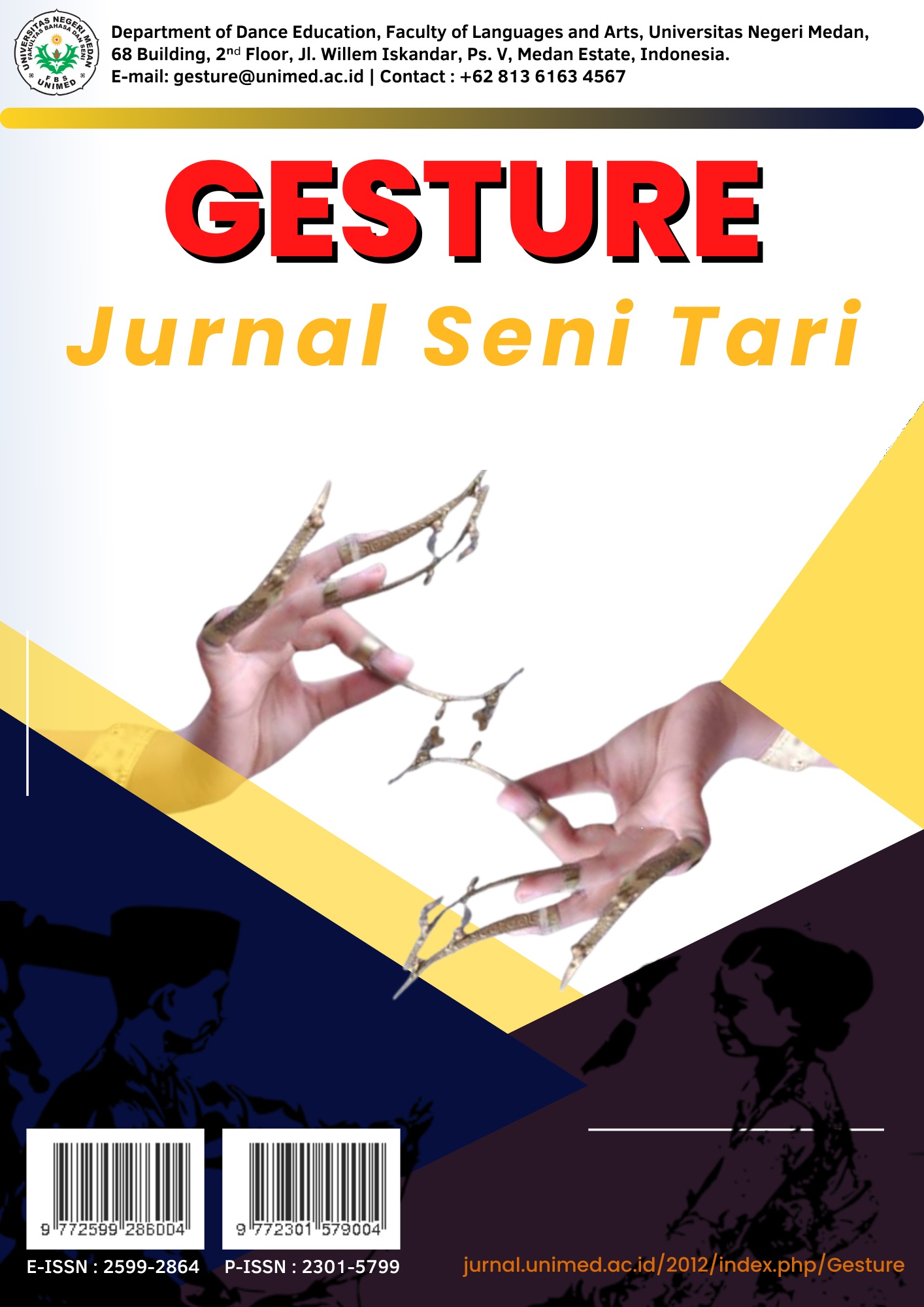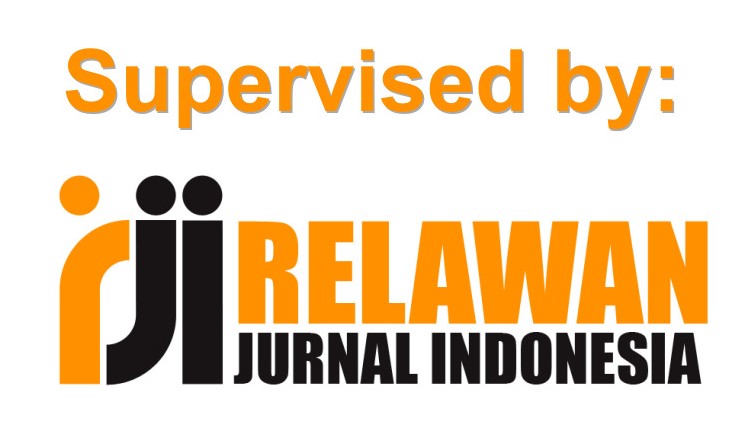Proses Kreatif Karya Tari Seri Fatwa
DOI:
https://doi.org/10.24114/gjst.v14i2.65646Abstract
The Seri Fatwa dance inspired work by Malay literature, namely Gurindam Dua Belas, created by Raja Ali Haji. The contents of Gurindam Dua Belas consist of twelve chapters with moral messages for human life. This work began with the concept of a solo dance danced by Rezky Gustian Asra, then underwent renewal in the creative process of creating a group dance consisting of three dancers which became a new form of presentation. The embodiment of this group dance form was created for performances at the Siak Bermadah Riau Festival, then continued with the Bangka Season of Arts Festival, the Batam Kenduri Melayu Arts Festival and represented Indonesia in performances at the 2023 MAPEH conference at Suphanburi College of Dramatic Arts, Thailand. The journey of this dance work aims to bring Malay culture in the promotion and education of one of the Malay literary works, namely Gurindam 12. This research uses a qualitative approach with a descriptive analysis method, where the author carries out an analysis process from video documentation sources of performances, interviews and artistic reviews of works. This paper reviews the creative work process in creating and presenting Fatwa Series dance works.References
Asra, R. G. (2022). Teori Hermeneutika sebagai alat atau metode dalam kajian pemahaman teks Gurindam Dua Belas pada konsep karya tari Seri Petua. (Mega, Interviewer)
Asra, R. G. (2024). Karya Tari TA dengan konsep makna Gurindam Dua Belas. (Mega, Interviewer)
Asra, R. G. (2024). Makna Nilai Hidup Manusia pada Gurindam Dua Belas dalam Seni Pertunjukan Karya Tari Seri Petua. Imaji: Jurnal Seni dan Pendidikan Seni, 120-133. https://doi.org/10.21831/imaji.v22i2.70316
Guntur. (2016). Metode Penelitian Artistik. Surakarta: ISI Press.
Hadi, S. (2014). Koreografi Bentuk – Teknik - Isi. Yogyakarta: Cipta Media. Yogyakarta: Cipta Media.
Hadi, Y. S. (2003). Aspek-Aspek Dasar Koreografi Kelompok. Yogyakarta: Elkaphi.
Hawkins, A. M. (2003). Mencipta lewat Tari. Yogyakarta: Manthili: Yogyakarta.
Martono, H. (2012). Ruang Pertunjukan dan Berkesenian. Yogyakarta: Cipta Media.
Meriam, A. P. (1964). The Anthopologi of Music terj Bramantyo. Chicago: North Western University Press.
Muhammad Zulfadhli, L. F. (2021). Analisis Gurindam Dua Belas Karya Raja Ali Aji Ditinjau Dari Aspek Sintaksis. Jurnal Geram, 1-8. https://doi.org/10.25299/geram.2021.vol9(1).6868
Santosa, E. (2008). Seni Teater Untuk Sekolah Menengah Kejuruan. Jakarta: Direktorat Jenderal Manajemen Pendidikan Dasar dan Menengah.
Sianipar, J. (2024). Penciptaan Musik Karya Tari Seri Fatwa. (Mega, Interviewer)
Smith, J., & Suharto, B. (1985). Komposisi Tari: Sebuah Petunjuk Praktis Bagi Guru. Yogyakarta: Ikalasti.
Sumardjo, J. (2000). Filsafat Seni. Bandung: ITB.
Downloads
Published
Issue
Section
License
Copyright (c) 2025 Mega Lestari Silalahi, Rezky Gustian Asra

This work is licensed under a Creative Commons Attribution-ShareAlike 4.0 International License.
Authors published with the Gesture: Jurnal Seni Tari agree to the following terms:
- Authors retain copyright and grant the journal the right of first publication with the work simultaneously licensed under a Creative Commons Attribution License (CC BY-SA 4.0) that allows others to share the work with an acknowledgment of the work's authorship and initial publication in this journal.
- Authors are able to enter into separate, additional contractual arrangements for the non-exclusive distribution of the journal's published version of the work (e.g., post it to an institutional repository or publish it in a book), with an acknowledgment of its initial publication in this journal.
- Authors are permitted and encouraged to post their work online (e.g., in institutional repositories or on their website) prior to and during the submission process, as it can lead to productive exchanges, as well as earlier and greater citation of published work. (See The Effect of Open Access)








